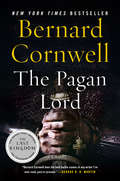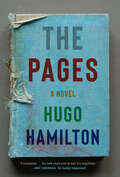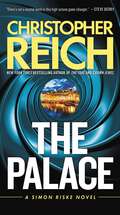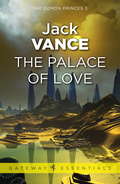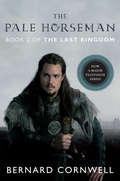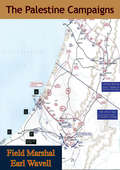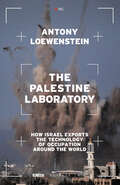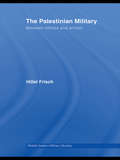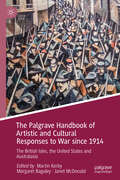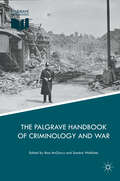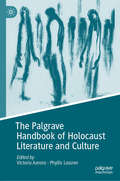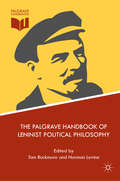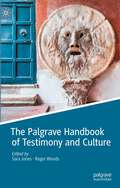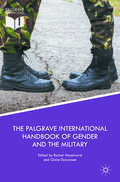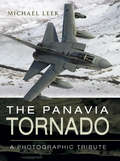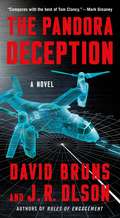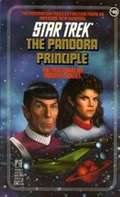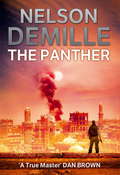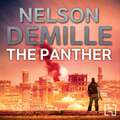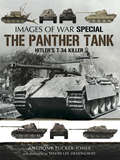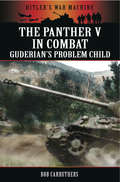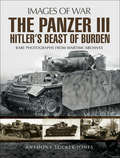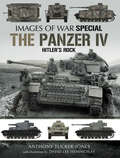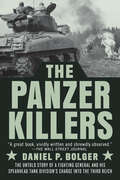- Table View
- List View
The Pagan Lord: A Novel (Saxon Tales #7)
by Bernard CornwellThe seventh installment of Bernard Cornwell’s New York Times bestselling series chronicling the epic saga of the making of England, “like Game of Thrones, but real” (The Observer, London)—the basis for The Last Kingdom, the hit television series.At the onset of the tenth century, England is in turmoil. Alfred the Great is dead and Edward, his son, reigns as king. Wessex survives, but peace cannot hold: the Danes in the north, led by Viking Cnut Longsword, stand ready to invade and will not rest until the emerald crown is theirs. Uhtred, once Alfred’s great warrior but now out of favor with the new king, must lead a band of outcasts north to recapture his old family home, that great Northumbrian fortress, Bebbanburg. In The Pagan Lord, loyalties will be divided and men will fall, as every Saxon kingdom is drawn into the bloodiest battle yet with the Danes: a war that will decide the fate of every king, and the entire British nation.
The Pages: A novel
by Hugo HamiltonAn entirely original novel in which a book—Joseph Roth's masterpiece Rebellion—narrates its own astonishing life story, from 1930s Germany to the present day, at the heart of a gripping mystery. &“A powerful, powerful piece of work.&” —Colum McCann, best-selling author of ApeirogonOne old copy of the novel Rebellion sits in Lena Knecht&’s tote bag, about to accompany her on a journey from New York to Berlin in search of a clue to the hand-drawn map on its last page. It is the brilliantly captivating voice of this novel—a first edition nearly burned by Nazis in May 1933—that is our narrator. Fast-paced and tightly plotted, The Pages brings together a multitude of dazzling characters, real and invented, in a sweeping story of survival, chance, and the joys and struggles of love. At its center are Roth, an Austrian Jewish author on the run, and his wife, Friederike, who falls victim to mental illness as Europe descends into war. With vivid evocations of Germany under Nazism and today, The Pages dramatically illuminates the connections between past and present as it looks at censorship, oppression, and violence. Here is a propulsive, inspiring tale of literature over a hundred years: a novel for book lovers everywhere that will bring a fresh audience to this acclaimed writer.
The Palace (Simon Riske #3)
by Christopher ReichIn this third installment of a series lauded for its "nonstop action in vividly rendered international locales," international spy Simon Riske must face a ring of ruthless masterminds and foil a plot with global implications as he becomes the world's most wanted man (Booklist). Life is good for Rafael de Bourbon. The forty-year-old Spaniard recently married to a wealthy English beauty, and is days away from opening a luxury boutique hotel off the southern coast of Thailand. But when the Royal Thai Police storm the hotel and arrest him for blackmail and extortion, "Rafa" is thrown into Bangkok's most notorious jail. In desperation, he reaches out to the one man who can prove his innocence. Simon Riske, ex-con and now "private spy," owes Rafa his life. Once he and De Bourbon were the closest of friends, until a woman came between them. Riske rushes to Bangkok to secure his friend's release and overnight, finds himself caught up in a web of intrigue larger and more dangerous than he could imagine. In hours, it is Riske who finds himself the wanted man. On the run in a foreign country, pursued by powerful unseen forces who will stop at nothing until he is killed, Riske must stay alive long enough to uncover the truth behind an international conspiracy that threatens to wreak carnage across the glittering capitals of Europe. From Bangkok to Singapore and ultimately to Cannes, Riske enlists the help of a daring investigative reporter, a rogue Mossad agent, and his own band of home-grown specialists, to thwart the cabal behind the plot, only to learn its very origins are frighteningly close to his past. Frighteningly timely, diabolically clever, and ever so stylish, The Palace is Christopher Reich's sharpest and most exciting book yet.
The Palace of Love (Gateway Essentials #207)
by Jack VanceIn the midpoint novel of the "Demon Princes" series, Kirth Gersen sets his sights upon the mysterious Viole Falushe. Vance describes this murderous creature as a "sybarite." "Sadistic pervert" would probably be a more apropos phrase. After several false leads, Gersen backtracks the villain to his point of origin - Earth, of all places! Then the trail moves outward again, to the starworlds and a place back of beyond where there is actually a physical Palace of Love.
The Pale Horseman: A Novel (Last Kingdom (formerly Saxon Tales) #2)
by Bernard CornwellThe second installment of Bernard Cornwell’s New York Times bestselling series chronicling the epic saga of the making of England, “like Game of Thrones, but real” (The Observer, London)—the basis for The Last Kingdom, the hit television series.As the last unvanquished piece of England, Wessex is eyed hungrily by the fearsome Viking conquerors. Uhtred, a dispossessed young nobleman, is tied to the imperiled land by birth and marriage but was raised by the Danish invaders—and he questions where his allegiance must lie. But blood is his destiny, and when the overwhelming Viking horde attacks out of a wintry darkness, Uhtred must put aside all hatred and distrust and stand beside his embattled country’s staunch defender—the fugitive King Alfred. The Pale Horseman is a gripping, monumental adventure that gives breathtaking life to one of the most important epochs in English history—yet another masterwork from New York Times bestselling author Bernard Cornwell.
The Palestine Campaigns
by Field-Marshal Earl Wavell Major-General Sir Charles CallwellIn this thoughtful and well written account of the Palestinian campaigns, Field Marshal Wavell (at that time a Colonel) gives not only a very readable account of the actual campaigns themselves but also highlights the military maxims that gave success to the British Forces. Wavell himself was on the staff of the Egyptian Expeditionary Force in 1917 and had a deep and firsthand knowledge of the operations and the theatre of war. As one of the most forward thinking leaders in the British Army of the time, Wavell's conclusions on the future of war that he advanced in this book were quite prescient; the use of armoured vehicles and strategic mobility to mention but two."The Palestine campaigns have been acclaimed as a triumph for cavalry and as the vindication of that arm in modern war. And quite certainly the skilful use of the mounted arm is the outstanding feature of the operations. But the true lesson is not so much the value of the horseman as the value and power of mobility, however achieved."The campaigns are a classic illustration of this power, and are well worth careful study for this reason alone, since the chief aim of military thought at the present time must be to recapture the power of movement and manœuvre, which was lost in the principal operations of the late war in Western Europe."--Extract from book
The Palestine Laboratory: How Israel Exports the Technology of Occupation Around the World
by Antony LoewensteinHow Israel makes a killing from the occupation of Palestine**WINNER OF THE 2023 WALKLEY NON FICTION JOURNALISM PRIZE****Shortlisted for the 2023 Moore Prize for Human Rights Writing**Israel&’s military industrial complex uses the occupied, Palestinian territories as a testing ground for weaponry and surveillance technology that they then export around the world to despots and democracies. For more than 50 years, occupation of the West Bank and Gaza has given the Israeli state invaluable experience in controlling an &“enemy&” population, the Palestinians. It&’s here that they have perfected the architecture of control.Best-selling journalist Antony Loewenstein, author of Disaster Capitalism, uncovers this largely hidden world in a global investigation with secret documents, revealing interviews and on-the-ground reporting. This book shows in-depth, for the first time, how Palestine has become the perfect laboratory for the Israeli military-techno complex: surveillance, home demolitions, indefinite incarceration and brutality to the hi-tech tools that drive the 'Start-up Nation'.From the Pegasus software that hacked Jeff Bezos' and Jamal Khashoggi&’s phones, the weapons sold to the Myanmar army that has murdered thousands of Rohingyas and drones used by the European Union to monitor refugees in the Mediterranean who are left to drown. Israel has become a global leader in spying technology and defence hardware that fuels the globe&’s most brutal conflicts. As ethno-nationalism grows in the 21st century, Israel has built the ultimate model.
The Palestinian Military: Between Militias and Armies (Middle Eastern Military Studies)
by Hillel FrischThis book analyzes Palestinian attempts to create an organized military force from the period of the Mandate up to the present day. Beginning with a comparative overview of the relationship between insurgent movements and the quest to build up a standard military, the book looks, first, at how the 1936 revolt galvanized the Palestinian leadership to attempt to create a military. It then goes on to examines other major topics such as: the 1948 failure to create an organized armed force; Palestinian participation in other Arab armed forces; the creation of the PLA; attempts to develop a security apparatus after Oslo; and, finally, the question of security reform and peace-making. The book concludes by identifying the lessons from the Palestinian experience that can be applied in promoting healthy civil-military relations within political entities located in major conflict zones.
The Palgrave Handbook of Artistic and Cultural Responses to War since 1914: The British Isles, the United States and Australasia
by Margaret Baguley Martin Kerby Janet McDonaldThis handbook explores a diverse range of artistic and cultural responses to modern conflict, from Mons in the First World War to Kabul in the twenty-first century. With over thirty chapters from an international range of contributors, ranging from the UK to the US and Australia, and working across history, art, literature, and media, it offers a significant interdisciplinary contribution to the study of modern war, and our artistic and cultural responses to it. The handbook is divided into three parts. The first part explores how communities and individuals responded to loss and grief by using art and culture to assimilate the experience as an act of survival and resilience. The second part explores how conflict exerts a powerful influence on the expression and formation of both individual, group, racial, cultural and national identities and the role played by art, literature, and education in this process. The third part moves beyond the actual experience of conflict and its connection with issues of identity to explore how individuals and society have made use of art and culture to commemorate the war. In this way, it offers a unique breadth of vision and perspective, to explore how conflicts have been both represented and remembered since the early twentieth century.
The Palgrave Handbook of Britain and the Holocaust
by Tom Lawson Andy PearceThis handbook is the most comprehensive and up-to-date single volume on the history and memory of the Holocaust in Britain. It traces the complex relationship between Britain and the destruction of Europe’s Jews, from societal and political responses to persecution in the 1930s, through formal reactions to war and genocide, to works of representation and remembrance in post-war Britain. Through this process the handbook not only updates existing historiography of Britain and the Holocaust; it also adds new dimensions to our understanding by exploring the constant interface and interplay of history and memory. The chapters bring together internationally renowned academics and talented younger scholars. Collectively, they examine a raft of themes and issues concerning the actions of contemporaries to the Holocaust, and the responses of those who came ‘after’. At a time when the Holocaust-related activity in Britain proceeds apace, the contributors to this handbook highlight the importance of rooting what we know and understand about Britain and the Holocaust in historical actuality. This, the volume suggests, is the only way to respond meaningfully to the challenges posed by the Holocaust and ensure that the memory of it has purpose.
The Palgrave Handbook of Criminology and War
by Sandra Walklate Ross McgarryThis interdisciplinary Handbook brings together into one coherent volume a range of international authors, who firmly establish the relevance of war within the discipline of criminology. The chapters address emerging and prevailing issues in the criminological study of war, including state crime, corporate crime, victimology, genocide, policing, security and various forms of violence. Taking a critical standpoint including feminist, cultural, and radical approaches amongst others, the Handbook is split into five clear sections: (1) The Criminogenic Contexts of War; (2) Violence and Victimization at War; (3) Violence, War and Security; (4) Perpetrators of Violence and the Aftermath of War; and (5) Cultural and Methodological Developments for a Criminology of War. Edited by two leading experts in the field, this Handbook provides an original point of reference on the contemporary debates and applications of criminology and war and will be a key resource for academics and students across criminology, international relations, critical military studies, military sociology, peace studies and law.
The Palgrave Handbook of Holocaust Literature and Culture
by Victoria Aarons Phyllis LassnerThe Palgrave Handbook of Holocaust Literature and Culture reflects current approaches to Holocaust literature that open up future thinking on Holocaust representation. The chapters consider diverse generational perspectives—survivor writing, second and third generation—and genres—memoirs, poetry, novels, graphic narratives, films, video-testimonies, and other forms of literary and cultural expression. In turn, these perspectives create interactions among generations, genres, temporalities, and cultural contexts. The volume also participates in the ongoing project of responding to and talking through moments of rupture and incompletion that represent an opportunity to contribute to the making of meaning through the continuation of narratives of the past. As such, the chapters in this volume pose options for reading Holocaust texts, offering openings for further discussion and exploration. The inquiring body of interpretive scholarship responding to the Shoah becomes itself a story, a narrative that materially extends our inquiry into that history.
The Palgrave Handbook of Leninist Political Philosophy
by Norman Levine Tom RockmoreThis intellectually discomfiting, disturbingly provocative, yet still thoroughly scholarly Handbook reproduces the intellectual ferment that accompanied the Russian Revolution including the wholly polarising effect at that time of Vladimir Ilyich Lenin. The Palgrave Handbook of Leninist Political Philosophy does not settle for one safe interpretation of the thought of this world-historic figure but rather revels in a clash of viewpoints. Most interestingly it presents a contrast between the Western editors who emphasise pure democracy and Marxian humanism with many of the contributing scholars who take a more sanguine view of the Leninist political project. Perhaps reflecting the current Western political crisis, some of the volume’s other European and North American scholars more closely align with their colleagues from the Global South. Key Features: · Places particular emphasis on the key elements of Lenin’s thought – the dictatorship of the proletariat (which is trenchantly defended), the nature of the dialectic and the New Economic Policy · Additional comprehensive coverage includes the theory of the party, Bolshevism, imperialism, and the class struggle in the countryside · Examines the relation of Lenin’s thought to the ideas of his most influential contemporaries (including Luxemburg, Stalin and Trotsky) as well as the most eminent thinker to interpret Lenin since his death – György Lukács This Handbook is essential reading for scholars, researchers and advanced students in political philosophy, political theory, the history of political ideas, economics, international relations and world history. It is also ideal for the general reader who wishes to understand some of the most powerful ideas that have shaped the modern world and that may yet shake the world again.
The Palgrave Handbook of Testimony and Culture
by Roger Woods Sara JonesThis Palgrave Handbook examines the ways in which researchers and practitioners theorise, analyse, produce and make use of testimony. It explores the full range of testimony in the public sphere, including perpetrator testimony, testimony presented through social media and virtual reality. A growing body of research shows how complex and multi-layered testimony can be, how much this complexity adds to our understanding of our past, and how creators and users of testimony have their own complex purposes. These advances indicate that many of our existing assumptions about testimony and models for working with it need to be revisited. The purpose of this Palgrave Handbook is to do just that by bringing together a wide range of disciplinary, theoretical, methodological, and practice-based perspectives.
The Palgrave International Handbook of Gender and the Military
by Rachel Woodward Claire DuncansonThe Palgrave International Handbook of Gender and the Military provides a comprehensive overview of the multiple ways in which gender and militaries connect. International and multi-disciplinary in scope, this edited volume provides authoritative accounts of the many intersections through which militaries issues and military forces are shaped by gender. The chapters provide detailed accounts of key issues, informed by examples from original research in a wealth of different national contexts. This Handbook includes coverage of conceptual approaches to the study of gender and militaries, gender and the organisation of state military forces, gender as it pertains to military forces in action, transitions and transgressions within militaries, gender and non-state military forces, and gender in representations of military personnel and practices. With contributions from a range of both established and early career scholars, The Palgrave International Handbook of Gender and the Military is an essential guide to current debates on gender and contemporary military issues.
The Panavia Tornado: A Photographic Tribute
by Michael LeekThrough a collection of dramatic and informative photographs, supplemented by cutaway illustrations, this book highlights the agility and flexibility of this dedicated RAF aircraft. Throughout the course of its career, it has formed the backbone of the RAF across its many different theaters of operation. Utilized in a strike, anti-aircraft, air superiority, air defense, reconnaissance, electronic warfare and fighter-bomber capacity, this aircraft type has enjoyed an immensely varied career. Each aspect is illustrated in this photographic celebration.The book includes photographs by the author and a select number of other amateur photographers, with the vast majority of photographs never previously published taken low level around the hills and mountains of England, Scotland and Wales. This impressive new photographic publication will be presented in full colour and is sure to be prized as a collector's piece amongst fans of the genre.
The Pandora Deception: A Novel (The WMD Files #4)
by David Bruns J. R. OlsonWith The Pandora Deception, Bruns and Olson return with a captivating portrayal of modern day combat that "compares with the best of the timeless classics by Tom Clancy, Dale Brown, and Stephen Coonts." (Mark Greaney) To effectively combat the rise of global terrorism, the U.S. military must now rely on more than traditional weapons and tactics. Don Riley of the U.S. Cyber Command is given charge of a brand new effort: a new team in the CIA Operations Directorate called Emerging Threats. To establish this team he recruits three talented recent commissioned naval officers—Janet Everett, Michael Goodwin, and Andrea Ramirez—and together they uncover a new terrorist group. The group is going under the name of the Mahdi, a messiah figure of Islamic mythology, and is operating in the geopolitical tinderbox that is the Nile River basin. But the Mahdi is no ordinary terrorist group. Their stock in trade is not the usual suicide bombings and surprise attacks. In fact, the Mahdi has created and is about to release the worst kind of weapon: a hugely destructive bioweapon, known as Pandora, with a devastating fatality rate. And it will take all the resources that the U.S. can bring to bear—intelligence assets, cyber warfare and military assaults—to not only find out who is really behind the Mahdi, but to stop them before they successfully destroy the balance of power in the Middle East.
The Pandora Principle (Star Trek: The Original Series #49)
by Carolyn ClowesA Romulan Bird of Prey mysteriously drifts over the neutral zone and into Federation territory. Captain Kirk and the crew of the Enterprise investigate, only to find the ship dead in space. When Starfleet orders the derelict ship brought to Earth for examination, the Enterprise returns home with perhaps her greatest prize. But the Bird of Prey carries a dangerous cargo, a deadly force that is soon unleashed in the heart of the Federation. Suddenly, the only hope for the Federation's survival lies buried in the tortured memory of Commander Spock's protégé, a cadet named Saavik. Together, Spock and Saavik must return to the nightmare world of Saavik's birth -- a planet called Hellguard, to discover the secret behind the Romulans' most deadly threat of all...
The Panther (John Corey #6)
by Nelson DeMilleIt's one of the most dangerous and volatile countries in the world: Yemen. A Middle Eastern hotbed of corruption and insurgency and the perfect training ground for Islamic terrorists.When FBI agents John Corey and Kate Mayfield are assigned to overseas posts in Sana'a, Yemen's capital city, they are tasked with hunting down the high-ranking Al Qaeda operative responsible for the USS Cole bombing. This man, known as The Panther, is wanted for terrorist acts and multiple murders and the US government is determined to bring him down, no matter the cost.As latecomers to a deadly game, John and Kate don't know the rules, the players or the score. What they do know is that there is more to their assignment than meets the eye - and that the hunters are about to become the hunted.In an action-packed and terrifying race to take down one of the most ruthless men alive, Nelson DeMille reunites readers with his charismatic hero John Corey.
The Panther (John Corey #6)
by Nelson DeMilleIt's one of the most dangerous and volatile countries in the world: Yemen. A Middle Eastern hotbed of corruption and insurgency and the perfect training ground for Islamic terroristsWhen FBI agents John Corey and Kate Mayfield are assigned to overseas posts in Sana'a, Yemen's capital city, they are tasked with hunting down the high-ranking Al Qaeda operative responsible for the USS Cole bombing. This man, known as The Panther, is wanted for terrorist acts and multiple murders and the US government is determined to bring him down, no matter the cost.As latecomers to a deadly game, John and Kate don't know the rules, the players or the score. What they do know is that there is more to their assignment than meets the eye - and that the hunters are about to become the hunted.In an action-packed and terrifying race to take down one of the most ruthless men alive, Nelson DeMille reunites readers with his charismatic hero John Corey - the sixth novel from the series.
The Panther Tank: Hitlers T-34 Killer (Images Of War Bks.)
by Anthony Tucker-JonesAlong with the Tiger, Sherman and T-34, the Panther ranks as one of the most famous tanks of the Second World War. Anthony Tucker-Jones, in this comprehensive new study of a remarkable fighting vehicle, uses over 100 archive photographs, along with a selection of colour profiles, to describe its design, development and operational record. On the Eastern Front the German army needed to counter the Red Armys robust and utilitarian T-34 which began to appear in every-growing and eventually decisive numbers. The Panther, the German response, was rapidly conceived and produced under extraordinarily difficult wartime conditions. With its sloping armour and a high-velocity 75mm gun, it proved to be a better medium tank than its predecessor the Mk IV, it was more versatile than the heavyweight Tiger and it was superior to most of the Allied tanks it faced. It also had an important influence on subsequent tank design. Anthony Tucker-Joness photographic history gives a fascinating insight into its wartime career.
The Panther V in Combat: Guderian's Problem Child (Hitler's War Machine)
by Bob CarruthersThe Panther V evidenced a number of problems in combat, and this was the proof of the rushed development programme thatwas made obvious from the events at Kursk. However, despite its disappointing battlefield debut, the Panther is frequently hailed as the best all round tank of the war.This fascinating study by Emmy award winning author and historian Bob Carruthers draws on a wide variety of combat reports and unique primary sources to weigh up the facts in order to produce the definitive single volume overview of a legendary fighting machine. Included are numerous examples of wartime combat reports from both Allied and German sources,additionally there are a large selection of extracts from the Pantherfibel, theoriginal crew training manual.This superb book is essential reading for anyone interested in tank warfare during World War II.
The Panzer III: Hitler's Beast of Burden (Images of War)
by Anthony Tucker-JonesThe Panzerkampfwagen III Panzer III was one of the German army's principal tanks of the Second World War, yet its history is often overlooked in comparison to its more famous successors the Panzer IV, Panther and Tiger. Anthony Tucker-Jones, in this volume in the Images of War series, provides a visual account of the tank in over 150 wartime photographs and describes in a concise text its development and operational history. The Panzer III was designed as part of Hitler's re-armarment program in the mid-1930's and played a key role in the German blitzkrieg offensives in Poland, France and the Soviet Union. Although it lacked adequate firepower and could not match more advanced Allied tanks like the T-34, it stayed in service in North Africa and on the Eastern Front and it was still encountered in action in Normandy towards the end of the war. Its reliable chassis was also adapted for assault gun production. In this form, as the Sturmgeschtz III, it took part in the defensive battles fought by the Wehrmacht as it retreated in Italy, France and eastern Europe. Anthony Tucker-Jones's selection of photographs show the Panzer III in every theater of the war and at every stage, and his text gives an insight into the design history and fighting performance of this historic armored vehicle.
The Panzer IV: Hitler's Rock (Images Of War Ser.)
by Anthony Tucker-JonesThe Panzerkampfwagen Mk IV proved to be the one constant in Hitler's Panzerwaffe throughout the Second World War - the German equivalent of the American Sherman and the Soviet T-34. In this companion volume to his best-selling visual histories of the Tiger and Panther tanks, Anthony Tucker-Jones provides a concise account of the Mk IV's design, development and performance in combat. The Mk IV served on every major front, in France, the Balkans, North Africa, the Soviet Union and, at the end of the war, in Germany itself - it was a key weapon in the blitzkrieg attacks launched early in the war and in the later desperate defense of the Reich.Using over 150 rare wartime photographs, plus a selection of specially commissioned color, he describes how the initial design of the Mk IV was modified and refined throughout the course of the conflict to counter the threats posed by ever more formidable Allied tanks and antitank guns on the battlefield. While the Mk IV was never produced in the same numbers as the leading Allied tanks, it was without doubt one of the principal armored vehicles of the Second World War, and Anthony Tucker-Jones's highly illustrated history is the ideal introduction to it.
The Panzer Killers: The Untold Story of a Fighting General and His Spearhead Tank Division's Charge into the Third Reich
by Daniel P. BolgerA general-turned-historian reveals the remarkable battlefield heroics of Major General Maurice Rose, the World War II tank commander whose 3rd Armored Division struck fear into the hearts of Hitler's panzer crews.&“The Panzer Killers is a great book, vividly written and shrewdly observed.&”—The Wall Street JournalTwo months after D-Day, the Allies found themselves in a stalemate in Normandy, having suffered enormous casualties attempting to push through hedgerow country. Troops were spent, and American tankers, lacking the tactics and leadership to deal with the terrain, were losing their spirit. General George Patton and the other top U.S. commanders needed an officer who knew how to break the impasse and roll over the Germans—they needed one man with the grit and the vision to take the war all the way to the Rhine. Patton and his peers selected Maurice Rose.The son of a rabbi, Rose never discussed his Jewish heritage. But his ferocity on the battlefield reflected an inner flame. He led his 3rd Armored Division not from a command post but from the first vehicle in formation, charging headfirst into a fight. He devised innovative tactics, made the most of American weapons, and personally chose the cadre of young officers who drove his division forward. From Normandy to the West Wall, from the Battle of the Bulge to the final charge across Germany, Maurice Rose's deadly division of tanks blasted through enemy lines and pursued the enemy with a remarkable intensity. In The Panzer Killers, Daniel P. Bolger, a retired lieutenant general and Iraq War veteran, offers up a lively, dramatic tale of Rose's heroism. Along the way, Bolger infuses the narrative with fascinating insights that could only come from an author who has commanded tank forces in combat. The result is a unique and masterful story of battlefield leadership, destined to become a classic.
